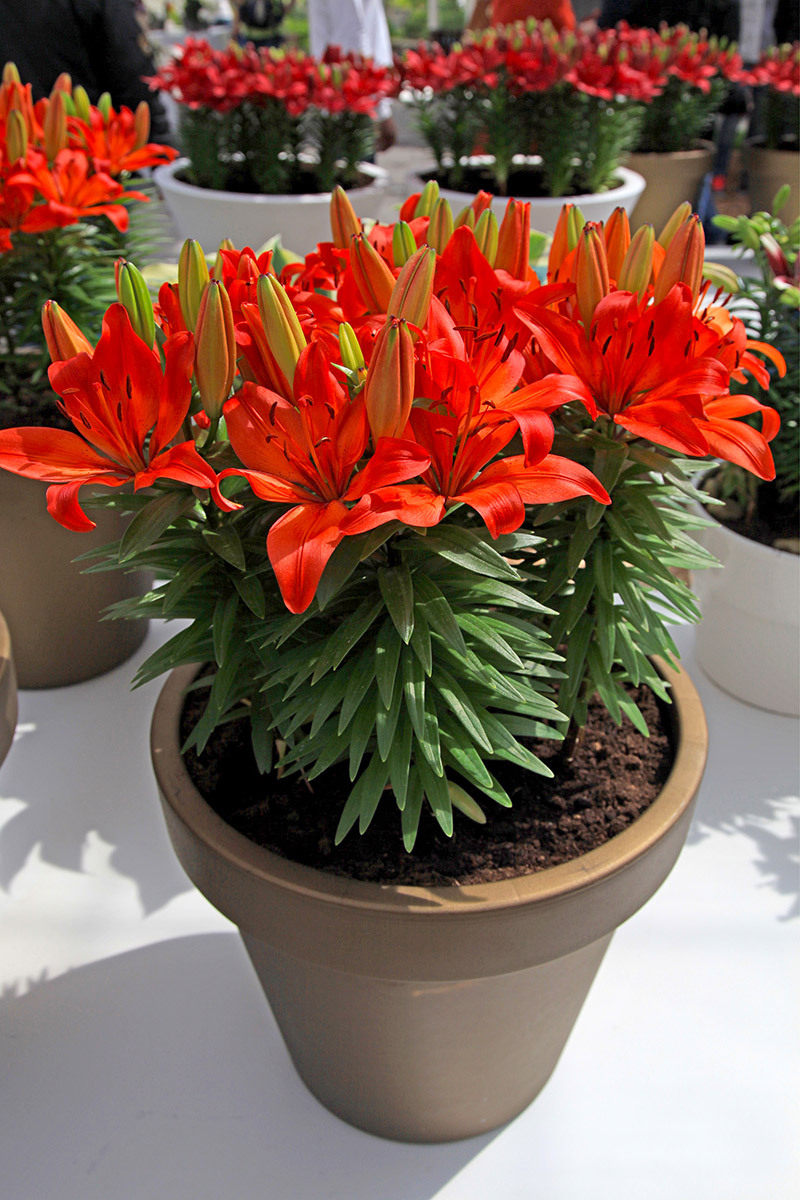Maximize the Freshness of Cut Flowers
Posted on 03/09/2025
Maximize the Freshness of Cut Flowers: Your Ultimate Guide
Nothing brightens a room or lifts the spirits quite like a fresh bouquet of cut flowers. Unfortunately, the beauty they bring often seems fleeting. With just a little knowledge and care, however, you can extend the life of your flowers and keep those vibrant colors and sweet scents lingering in your home for much longer. This comprehensive guide will show you how to maximize the freshness of cut flowers, providing tips and tricks from flower selection to aftercare to ensure your blooms remain stunning for days--even weeks.

Why Do Cut Flowers Wilt?
Understanding why cut flowers wilt is the first step in keeping them at their best. Flowers deteriorate after being severed from their roots because they lose access to water and nutrients, and are prone to bacteria and air blockages in their stems. Factors like the type of flower, water quality, ambient temperature, and even the cleanliness of your vase all contribute to how long your arrangement will last.
Choose the Freshest Flowers Possible
1. Shop Carefully
- Buy from trusted sources--local florists, farmers' markets, or reputable grocery stores known for quick flower turnover.
- Look for firm, closed buds on flowers like lilies, tulips, and roses, as these will open and last longer once home.
- For blooms like daisies, chrysanthemums, or sunflowers, pick those that are fully open but not drooping or browning.
2. Inspect Blossoms and Foliage
- Check the leaves--they should be vivid green, not yellowing or slimy.
- Avoid bunches with wilting, broken, or bruised petals.
- Squeeze the flower heads gently; fresh flowers feel firm to the touch.
Proper Tools and Preparation
1. Use Clean Scissors or Pruners
For best results, use a pair of sterilized, sharp scissors or floral shears. Never cut stems with dull or rusty tools--they can crush the vascular tissue, impeding water uptake.
2. Choose the Right Vase
- Wash the vase thoroughly with hot, soapy water to kill lingering bacteria before use.
- Pick a vase that fits the stem length and isn't overcrowded.
Maximizing the Freshness of Cut Flowers: Essential Steps
Step 1: Trim Stems Properly
- Always cut flower stems at a sharp 45-degree angle--this increases surface area, allowing better water absorption.
- Cut stems under running water or submerged in a bowl. This technique prevents air bubbles ("air embolism") from blocking stem vessels and stifling water intake.
- Remove 1-2 inches from the base when you first bring the flowers home.
Step 2: Remove Lower Foliage
- Any leaves that will sit below the water line should be plucked off immediately.
- Leaves in water encourage bacteria growth, which swiftly shortens the lifespan of your arrangement.
Step 3: Use Fresh, Clean Water
- Fill the vase with cool, clean tap water (filtered water is even better).
- Change the water every 1-2 days for optimal freshness.
Step 4: Add Flower Food or Homemade Preservatives
- Most store-bought bouquets come with a packet of floral preservative. Use it as directed to feed your flowers and inhibit bacterial growth.
- If you don't have any, you can make your own:
- 1 teaspoon sugar--provides energy for blooms.
- 1 teaspoon vinegar or lemon juice--lowers pH, making it easier for flowers to drink.
- Few drops of bleach (optional)--acts as a mild antibacterial agent.
- Stir ingredients into a quart of water. Replace solution with each water change.
Location Matters: Place Arrangements Wisely
Keep Flowers Cool and Away from Direct Sunlight
- Heat and direct sunlight cause cut flowers to wilt rapidly.
- Position your arrangement in a cool spot, far from heat sources (radiators, electronics, sunny windowsills).
- At night, you can place the vase in the fridge or a cool basement if possible--many florists use this trick to prolong freshness overnight.
Protect From Drafts and Fruit
- Drafts and breezy conditions dry out petals.
- Keep flowers away from fans, air conditioners, or open windows.
- Never place flowers near fresh fruit. Fruits release ethylene gas--a natural ripening agent that speeds up flower aging and decay.
Advanced Strategies to Keep Cut Flowers Fresh
Re-Cut Stems Regularly
Every couple of days, repeat the process of trimming 1/4 to 1/2 inch from each stem at an angle. This keeps water channels open and encourages continued hydration.
Prune Fading Flowers and Leaves
- Promptly remove any wilted, browning, or droopy blooms. Dying flowers release ethylene gas, which can trigger faster deterioration of the whole arrangement.
- Trim back yellowed leaves as soon as you see them.
Try Special Flower Varieties and Mixed Arrangements
- Some flowers are bred for exceptionally long vase life, such as alstroemeria, chrysanthemums, carnations, and orchids.
- Avoid combining flowers that secrete latex (like daffodils) with others unless they have been preconditioned.
- Mixing strong sticks with more delicate stems can give structure, allowing all flowers to absorb water more evenly.
Common Mistakes That Shorten Vase Life
- Forgetting to change the water--stale, dirty water encourages bacteria.
- Leaving foliage below the water line.
- Neglecting to trim stems every few days.
- Placing arrangements in direct sun or near heat sources.
- Using tall, crowded vases that restrict air circulation.
- Ignoring flower-specific needs (some, like tulips, prefer less water, while hydrangeas drink a lot!).
Myths and Facts About Keeping Cut Flowers Fresh
Do Pennies Make Flowers Last Longer?
Some believe that adding a copper penny to your vase water can prolong the freshness of cut flowers. While copper does have antimicrobial properties, modern pennies contain mostly zinc. If you want extra antibacterial action, a few drops of bleach or a floral preservative packet are more effective.
Is Aspirin Useful?
Aspirin is sometimes touted as a way to lower the water's pH, but there's little scientific evidence to show it makes a significant difference to vase life. A solution of sugar and vinegar works better.
How Long Do Different Cut Flowers Last?
- Carnations, orchids, and chrysanthemums: 2-3 weeks with proper care
- Roses: 7-10 days
- Tulips and daffodils: 5-8 days
- Sunflowers: About 1 week
- Peonies and lily of the valley: 5-7 days
Flower-Specific Advice for Maximum Vase Life
Tulips
- Display away from direct light and top up water daily--tulips are thirsty!
- Trim stems every 2-3 days to prevent drooping.
Roses
- Remove thorns and lose lower leaves.
- Change water often and recut stems under water for the best effect.
Hydrangeas
- These need a lot of water. Dip cut ends in boiling water for 30 seconds before arranging to prevent wilting.
Orchids
- Orchids prefer warm water and should be kept away from cold drafts.
Creative Tips to Further Prolong Freshness
- Mist your blooms lightly every couple of days for humid-loving flowers like hydrangeas and ferns.
- Rotate your bouquets to different spots in the house during warm or sunny days to keep temperatures optimal.
- Use two vases: Place flowers in a water-filled vase overnight and display in a dry vase (for only a few hours) for special occasions--this cuts down on mold risk and keeps arrangements crisp.
- Try using a clear plastic wrap around flower heads for overnight refrigeration to prevent dehydration in dry fridge environments.
Maximizing the Freshness of Cut Flowers: A Summary Checklist
- Start with fresh, high-quality blooms from reliable sources.
- Clean all tools and vases thoroughly before use.
- Trim stems at an angle and remove submerged leaves.
- Use fresh, cool water and add flower food or homemade preservatives.
- Keep arrangements away from sunlight, heat, drafts, and fruit baskets.
- Change water and re-cut stems every few days.
- Regularly remove dying blooms and yellowing leaves.
- Cater to specific flower needs and varieties for optimal lifespan.
Conclusion: Enjoy Linger-Lasting Beauty
It doesn't take a degree in botany to maximize the freshness of cut flowers. With a discerning eye, the right preparation, and a few helpful habits, you can keep your bouquets looking stunningly fresh for as long as possible. The next time you fill your home with flowers--whether from a florist or your own garden--put these proven strategies to the test. Enjoy the color, fragrance, and joy of cut flowers day after day, and amaze friends and family with your floral finesse!

Frequently Asked Questions
How do I revive wilting flowers?
Trim the stems, remove lower leaves, and immerse the entire bouquet (blossoms and all) in cool water for 30 minutes. This can sometimes refresh stiff, droopy stems. Always replace water and use preservative afterward.
Can I use soda or mouthwash in vase water?
A small amount of clear soda (like Sprite) can provide sugars, and some mouthwashes kill bacteria. However, nothing beats the classic sugar-vinegar-bleach mix or professional flower food for maximizing the freshness of cut flowers.
With a little care, cut flowers can bring joy, color, and natural beauty into your life for days--or even weeks. Start today and make every bouquet last!
Latest Posts
Ensuring Your Poinsettias Thrive Past the Holidays
The Power of Red Roses on Valentine's Day Explained
Maximize the Freshness of Cut Flowers






